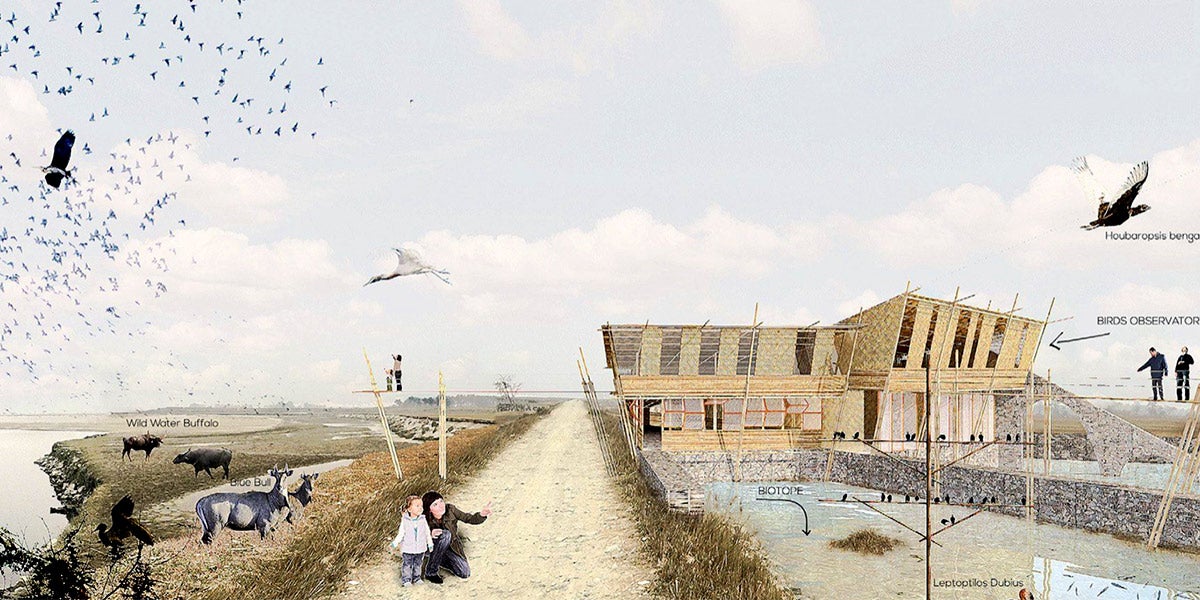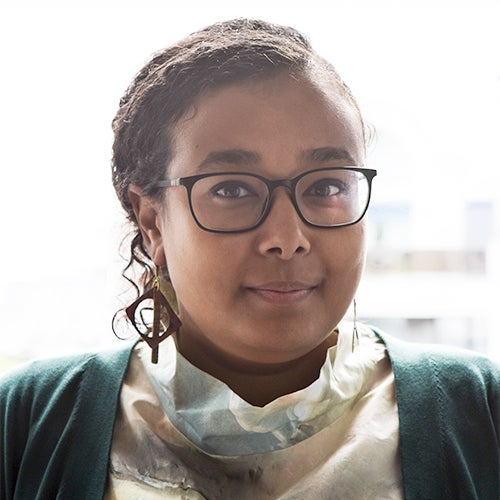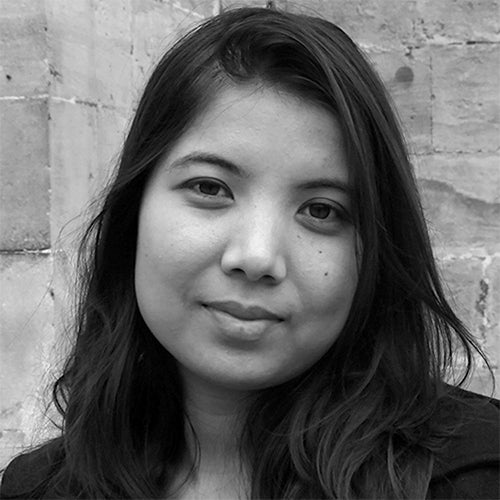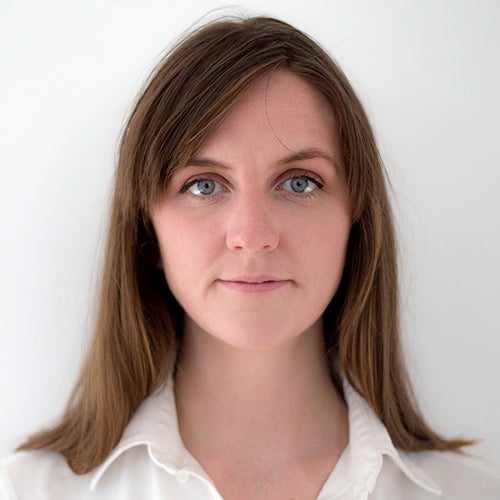 A rendering of the Koshi Tappu Campus from KTK-BELT, a firm cofounded by fellow Priyanka Bista
A rendering of the Koshi Tappu Campus from KTK-BELT, a firm cofounded by fellow Priyanka Bista
The School of Architecture & Environment welcomes four new fellows in Design for Spatial Justice beginning this term for teaching and research. The visiting faculty fellows will be in residence at the Eugene and Portland campuses.
Design for Spatial Justice
SAE Lecture Series
Land/Landed
5:15-6:30 p.m. Monday, October 21
Lawrence Hall 206
Featuring Priyanka Bista and Zannah
Mae Matson; moderated by Department
of Architecture Professor Jerolim
Mladinov.
House/Housed
5:15-6:30 p.m. Monday, October 28
Lawrence Hall 206
Featuring Karen Kubey and Menna Agha;
moderated by Department
of Architecture Instructor Kaarin
Knudson.
Place/Placed
5:15-6:30 p.m. Monday, November 4
Lawrence Hall 206
Featuring Chris Cornelius and
Garrick Imatani; moderated by
Landscape Architecture
Assistant Professor Mark Eischeid
The fellowship program was established in 2019 to support visiting faculty who will engage communities, within and outside of the UO, in their research and teaching, and whose scholarship at the intersections of gender, race, ethnicity, indigeneity, sexuality, and economic inequality is enriched by their lived experience.
Design for Spatial Justice is a three-year initiative; there will be two additional fellowship awards starting in winter term and the school will re-issue a call for applications after that for awards for the 2020–21 academic year.
“I am certain that these visiting faculty fellows will have tremendous impact on our students and pedagogy in the School of Architecture & Environment, as the fellows exemplify the leading edge of community-engaged design practices for spatial and environmental justice,” said Erin Moore, the school’s director. “This promises to be a ground-breaking year, and one that shapes the long-term future of our programs in architecture, interior architecture, landscape architecture, and historic preservation.”
Read on to learn more about the fall term fellows. Look for additional stories on future fellows this winter.
Design for Spatial Justice Podcast Series
Menna Agha
A visiting assistant professor teaching architecture in fall and winter terms, Agha is a researcher and architect who earned a PhD in architecture from the University of Antwerp in 2019 and a MA in integrated design, with a focus on gender and design, from the Technical University of Cologne, Germany.
Spatial justice is an overarching theme in Agha’s work, however, she explained, this is not a choice born of luxury. She is a third-generation Nubian woman displaced by the Egyptian state as part of the Aswan High Dam project in the 1960s.
“Our grandmothers carried the pain of losing their homes and their matrilineal wealth and powers through generations and down to me, deeming my fundamental problems in life to be spatial and gendered,” Agha explained. “Eventually, I came to the conclusion that spatial justice starts with the right to define, make, and appropriate the ‘spatial’ on an ontological level, especially by those [not in] power.”
The only way to strive for spatial justice, Agha said, is to create alliances and communities that can design and decide their own spaces, such as the Frauen-Werk-Stadt (Women-Work-City), a housing project in Vienna made for and by women.
Agha wanted to come to the College of Design because the fellowship emphasized the personal involvement of scholars in an issue, community partnerships, and hands-on studios.
“The call also recognizes the right of indigenous people to the land on which the university stands, which resonated deeply to me as a displaced indigenous individual,” Agha said.
Priyanka Bista
The Nepali-Canadian architect and designer Priyanka Bista joins the cohort as a visiting assistant professor, teaching a Portland studio in architecture and hosting a visiting faculty fellows podcast. Bista earned an MA in International Architectural Regeneration and Development (’12) and a Postgraduate Certificate in Shelter after Disaster (’13) at the Oxford Brookes University.

Bista is the cofounder and design director of KTK-BELT, the studio working with local communities in Eastern Nepal to create the “Vertical University,” a continuous forest belt that will conserve Nepal’s biodiversity and span the 8,000-meter vertical gradient from Koshi-Tappu Wildlife Reserve to Mount Kanchenjunga, the third tallest peak in the world.
This project prioritizes spatial justice, Priyanka said, as Nepal’s urbanization has led to an expansion of more than 50 percent more road coverage in previously isolated regions resulting in the privatization of public spaces, splicing of agricultural land, increased deforestation, and the dislocation of marginalized communities.
“Within the past three and a half years, KTK-BELT has enabled rural communities, elders, teachers, students, and youth, to participate in safeguarding threatened landscapes and indigenous knowledge, essentially becoming the stewards of their own landscapes,” said Bista.
As a lifelong advocate for social and environmental justice, Bista said it was important that the school provided support and a platform to bring the Vertical University into the architectural studio.
“It is a rare opportunity to find a university that is actively interested in shaping the trajectory of design for spatial justice,” Bista said. “Additionally, I feel there is a great deal for me to learn from the work of Director of the School of Architecture & Environment Erin Moore that brings together environmental and social equity. Her interdisciplinary approach moves beyond a siloed approach, bringing together fields that would not typically work together.”
Karen Kubey
An urbanist specializing in housing and health, Karen Kubey starts this term as a visiting associate professor teaching architecture in Portland and will then teach in Eugene for the winter and spring terms.

Kubey earned a master of architecture from Columbia University (’09) and a bachelor of arts in architecture from the University of California, Berkeley (’02). She has taught as a visiting associate professor at Pratt Institute and other institutions. Kubey was also the first executive director of the Institute for Public Architecture and is the editor of Housing as Intervention: Architecture towards Social Equity (2018).
In her work, Kubey pursues spatial justice by examining how architecture and urban design might address injustices rooted in the built environment. She points to how health inequalities across racial lines are often correlated with substandard housing and environmental hazards such as freeways that cut through low-income communities of color.
“These disparities can be reduced by designing and building improved housing and infrastructure,’ Kubey said.
Some of her favorite examples of designing for spatial justice are the frameworks that help identify just and unjust spaces in the everyday environment, such as Interboro Partners’ “The Arsenal of Exclusion and Inclusion” and Toni L. Griffin’s “The Just City Index.”
These frameworks can, for example, identify that a public bench designed with armrests dividing it into sections excludes people experiencing homelessness from sleeping on it, Kubey explained.
Kubey is delighted to return to the West Coast and join SAE, where she will be developing research on design and health equity and working toward the publication of Good Neighbors II, a book that updates and expands the 1997 comprehensive guide to affordable housing design in the U.S.
“Sharing the SAE community’s sense of urgency around developing more inclusive design pedagogies and working toward a more just world, I am honored to be able to expand my collaborative spatial justice research in the context of this unique fellowship,” Kubey added.
Zannah Mae Matson
Zannah Mae Matson is a visiting assistant professor teaching in Landscape Architecture in fall and winter terms. Currently a PhD student in human geography at the University of Toronto, her research focuses on the construction of territory through highway infrastructure development and counterinsurgency doctrine in Colombia. Matson is also a course instructor in urban planning and design at the Ryerson’s School of Urban and Regional Planning in Toronto. Matson earned a master in landscape architecture from the Harvard Graduate School of Design.
 For Matson, spatial justice encompasses both physical design of spaces in practice, as well as the way we think about research and theorize space. “A lot of my work addresses how spaces are imagined to reinforce racial hierarchy and unequal power structures, and I believe work that seeks to uncover the construction of the status quo can be a powerful first step in radically dismantling how injustice is spatially coded into our lives,” Matson said.
For Matson, spatial justice encompasses both physical design of spaces in practice, as well as the way we think about research and theorize space. “A lot of my work addresses how spaces are imagined to reinforce racial hierarchy and unequal power structures, and I believe work that seeks to uncover the construction of the status quo can be a powerful first step in radically dismantling how injustice is spatially coded into our lives,” Matson said.
Particularly in the field of landscape architecture, Matson said that the work of the Harlem-based Studio Zewde is some of her favorite examples of spatial justice in practice and theory.
“The way that the studio produces analysis and research of sites and concepts expands the traditional approaches of the discipline to consider spatial practices beyond the limited Euro-Western canon,” she said.
The initiative’s emphasis on bringing together different disciplines to advance the scholarship of spatial justice, Matson said, was one of the reasons she wanted to come.
“The possibility of weaving together my research in human geography with work in landscape is really exciting,” Matson said. “I’m particularly grateful to being doing this at the UO College of Design because of the strong work already done to advance spatial justice by faculty and students, and I am looking forward to researching and thinking about spatial justice alongside such an engaged community.”
